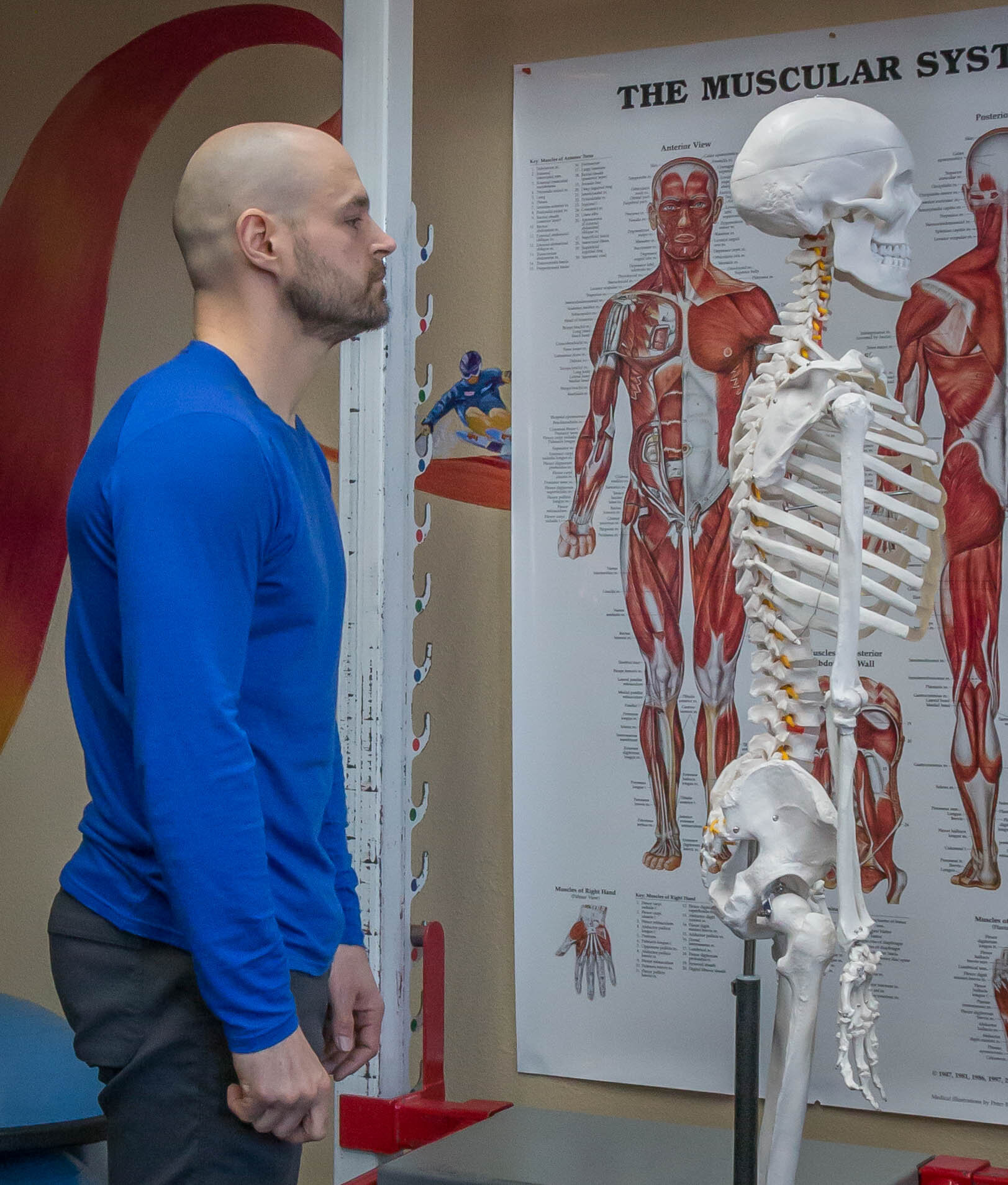Forward Head Posture
“Sit up straight in your chair”! A command I was accustomed to hearing from ANY adult who could see me slouching. At the time I would comply, but I didn’t appreciate the favor, at all. I haven’t heard anybody say that to a child for YEARS. Things have changed.
So here we are. Slouching is commonplace across most demographics in the US today. When we sit or stand up straight, we are stacking ourselves over our center of gravity. Maintaining this arrangement provides for safety, stability, stamina, and mobility.
Slouching produces some consequences as well. Let’s look at the head. As the head moves forward, increased strain is placed on the cervical muscles, discs, and bones. The muscles along the back of the neck become tight as they struggle to hold the head up. The deep neck flexors that lengthen the cervical spine and bring the chin down become stretched and inhibited. This change in muscle tone often results in powerful compressive forces being placed on cervical discs and vertebrae. Degenerative processes in the region may speed up.
Some issues that are associated with this postural distortion are:
Head, neck, and jaw pain
A forward head may be the beginning of a destructive body wide compensation pattern.
The shoulders often begin hunching forward creating a “hump back” appearance.
Altered concentration, focus, irritability, and mental stamina may occur as proper circulation to/from the brain can be compromised.
Early on, this process is much easier to change. As the posture is held over time, boney adaptations to the stress may develop making it increasingly difficult to reclaim a more appropriate posture.
——————————————————————
“I see now that the path I choose through the maze makes me what I am. I am not only a thing, but also a way of being—one of many ways—and knowing the paths I have followed and the ones left to take will help me understand what I am becoming”. Daniel Keyes
Self-Awareness is of paramount importance when working to modify posture
Regularly check/correct your own posture.
Where is your head relative to your body? How does it feel? Make a correction if needed. How do you feel now?
A little effort will go a long way.
You might consider asking for timely feedback about slouching from friends and family.
Chiropractic treatment can be quite helpful as a structural rearrangement often needs to take place.
How can Elemental Strength Help?
Therapeutic Strength
Therapeutic Strength (TS) takes aim at both the problems of posture and the weakness that often accompanies it with results becoming apparent in as few as 4 sessions.
For best results these 50 minute sessions should occur independently of other strength training with 5-7 days of rest in-between.
TS will begin with a check in and postural assessment.
Some combination of fascial bodywork, PNF stretching, Neurokinetic Therapy®, and/or kinesiology tape will be used to address areas of concern.
After working together to prepare your body, we follow up with a full body High Intensity Strength training workout. This will be performed on marvelously engineered Med X equipment. This equipment allows for a high level of stress to be applied to the musculoskeletal system with the majority of the strain landing squarely on the target muscles while sparing joints and ligaments.
As an LMT working with a strength training client once a week, over time, I often come to deeply understand their aches, pains, and patterns of dysfunction. For several of my clients I have been providing very brief bodywork just prior to training and the results have been amazing. Postural distortions, injuries, aches, pains, and other signs of dysfunction inhibit proper breathing, body mechanics, and as a result, the outcomes of training. After 10 years of training clients with Med X while performing massage separately, I have decided to put it together into one offering and I call it Therapeutic Strength.


